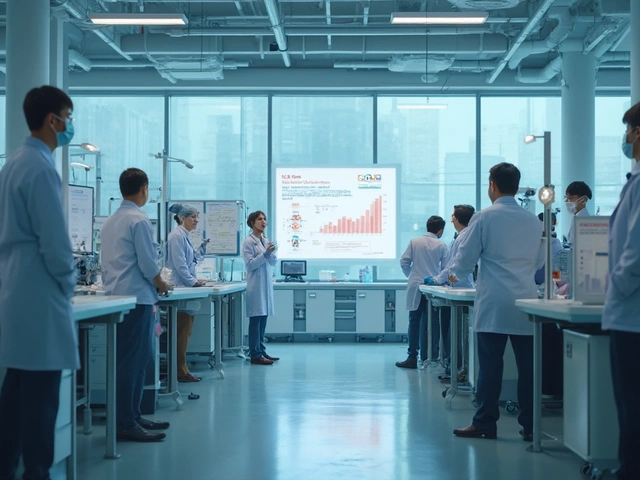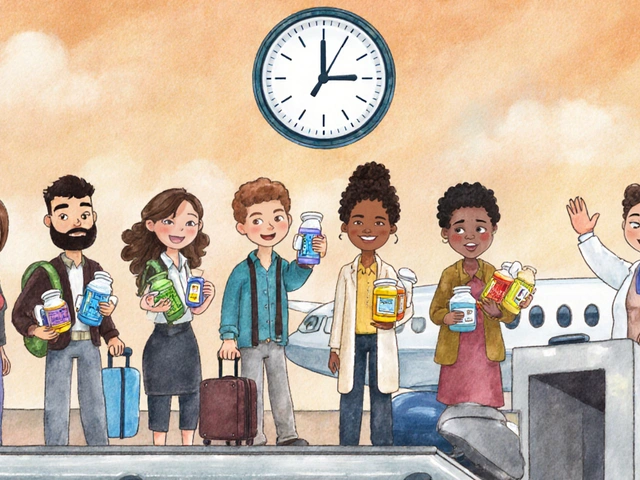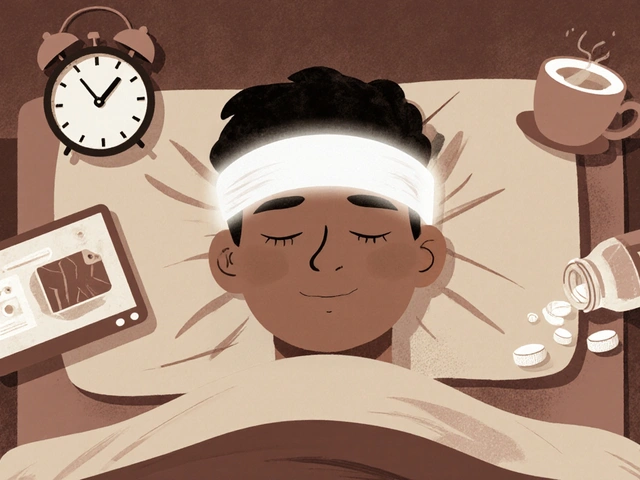18
Stability Testing: Long-Term Quality Monitoring Post-Manufacture in Pharmaceuticals
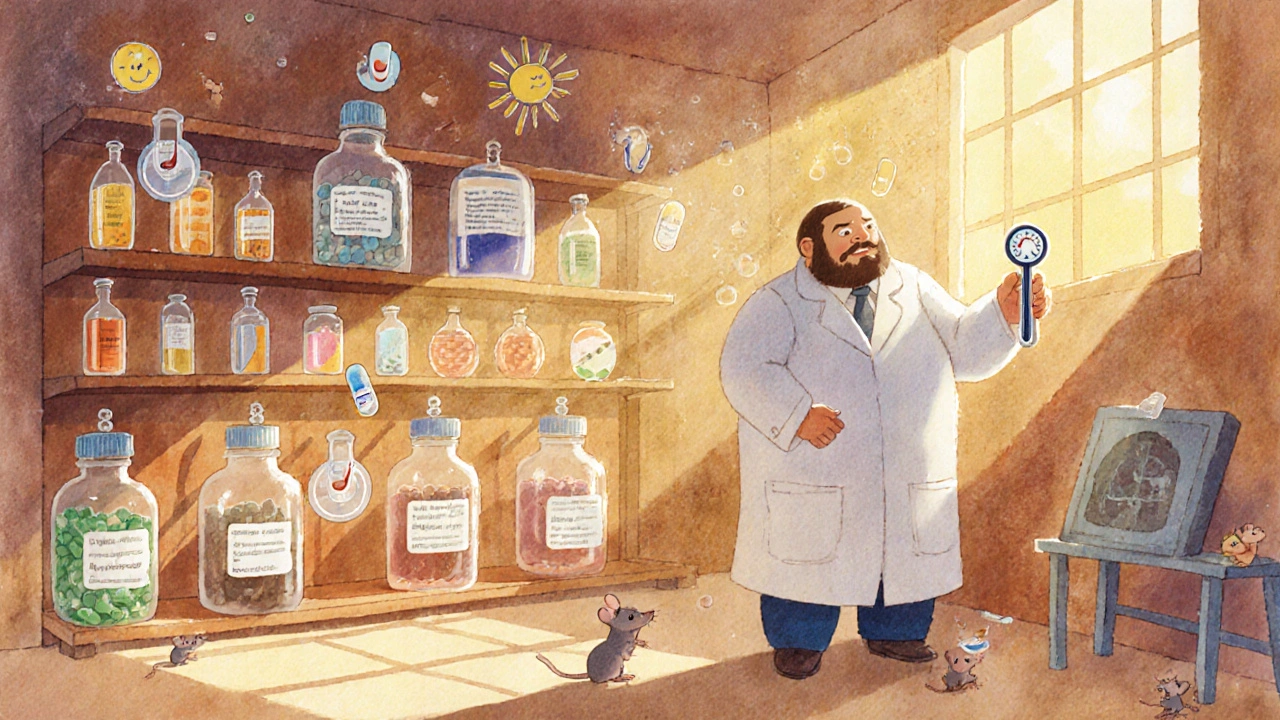
When you take a pill, injectable, or inhaler, you expect it to work exactly as it should-no matter how long it’s been sitting on the shelf. But how do manufacturers know that drug won’t break down, lose potency, or turn harmful over time? That’s where stability testing comes in. It’s not just paperwork or a box-ticking exercise. It’s the backbone of patient safety in pharmaceuticals.
Why Stability Testing Isn’t Optional
Every drug has a shelf life. That date printed on the bottle? It’s not arbitrary. It’s the result of months, sometimes years, of real-world data collection under controlled conditions. The International Council for Harmonisation (ICH) set the global standard in 2003 with ICH Q1A(R2), and since then, every major regulator-from the FDA to the EMA-requires this data before approving any new medicine. Without stability testing, drugs could degrade into toxic byproducts. In 2021, 17.3% of all drug recalls in the U.S. were linked to stability failures: tablets crumbling, liquids turning cloudy, or active ingredients dropping below 90% potency. These aren’t theoretical risks. They’re documented failures that led to real-world harm and lost trust. Stability testing isn’t about checking one batch. It’s about understanding how every batch, over time, behaves under real storage conditions. Temperature, humidity, light-each factor can trigger chemical changes. A cancer drug stored in a warm warehouse might lose effectiveness. An insulin vial exposed to sunlight could form dangerous aggregates. Stability testing catches these issues before they reach patients.How Stability Testing Actually Works
Picture a room the size of a small warehouse, filled with shelves of sealed drug packages. Each shelf sits inside a climate-controlled chamber. One set of chambers holds samples at 25°C and 60% humidity-the standard for temperate climates. Another set runs at 40°C and 75% humidity, simulating extreme conditions to predict long-term behavior faster. A third set is wrapped in foil and exposed to intense light, mimicking what happens if a medicine sits on a sunny windowsill. At 0, 3, 6, 12, 24, and 36 months, technicians pull samples. They don’t just look at them. They test them with precision tools:- Assay testing: Measures how much active ingredient remains.
- Degradation product analysis: Uses HPLC or GC-MS to detect harmful breakdown chemicals.
- Dissolution testing: Checks if the pill still breaks down properly in the body.
- Physical inspection: Looks for discoloration, clumping, or container leaks.
- Microbial testing: Ensures sterile products stay free of contamination.
The Cost of Getting It Right
Stability testing isn’t cheap. A single product can cost between $50,000 and $150,000 to test over three years. For a company with 50 products? That’s $2.5 million to $7.5 million-just for testing. Add in the chambers, calibration, staff, and data systems, and annual investment often hits $1 million or more. Why spend so much? Because the alternative is worse. A 2022 case at a major biotech firm found a new biologic drug was reacting with its glass vial, forming particles that could cause immune reactions. Stability testing caught it before the product went to market. The fix? Switching to a different vial type. The cost? $500,000. The cost of a recall? Over $500 million. Even small mistakes have big consequences. One company lost eight months of timeline-and $2.3 million in delayed sales-because humidity spikes in their stability chamber caused data gaps. Regulators don’t accept incomplete data. No data? No approval.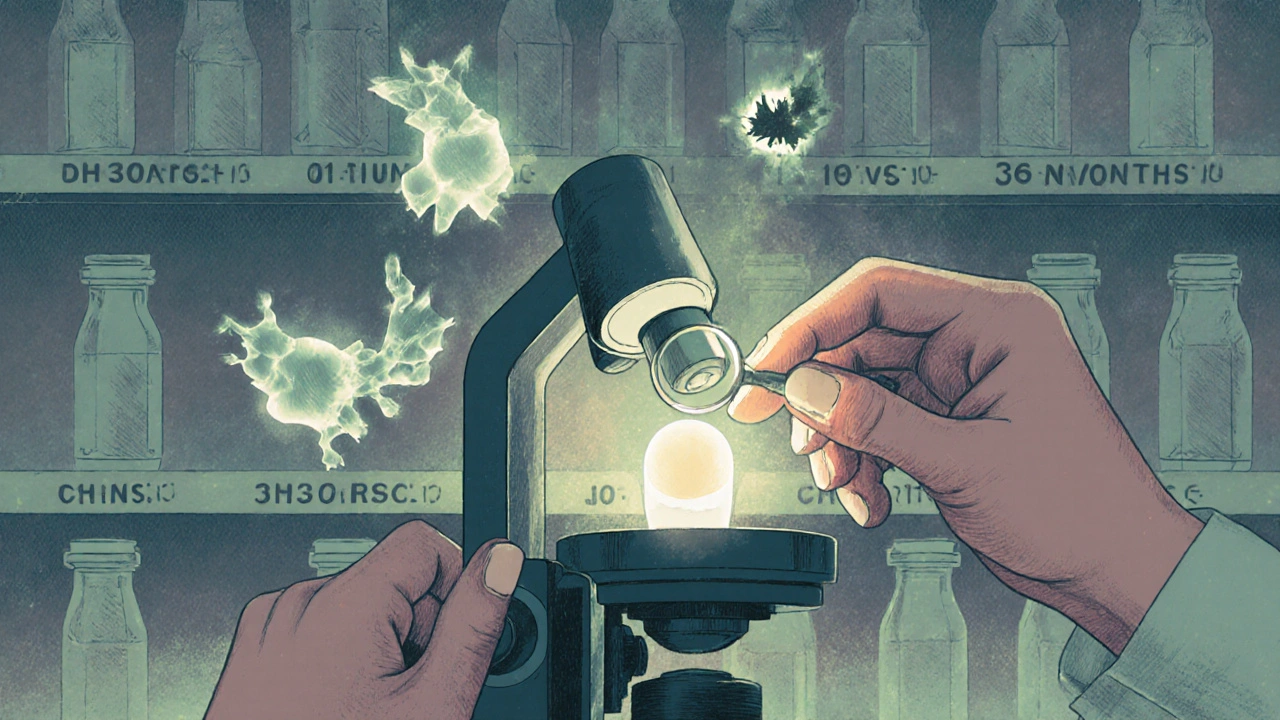
Real-Time vs. Accelerated Testing: What’s the Difference?
There are two main types of stability testing: real-time and accelerated. Real-time testing runs under normal storage conditions. It takes 24 to 36 months to complete. But it’s the gold standard. It shows exactly how the product behaves over its intended shelf life. The FDA requires this for final expiration dating. Accelerated testing pushes samples to 40°C and 75% humidity for six months. It’s used early in development to spot red flags. But it’s not a substitute. A 2021 study in the Journal of Pharmaceutical Sciences showed accelerated data predicted shelf life correctly in only 68% of cases. Some drugs degrade unpredictably under heat-like certain biologics or oral suspensions. Relying only on accelerated data is risky. That’s why regulators insist on both. Accelerated testing flags problems. Real-time testing confirms them.Who’s Doing It-and How
Large pharmaceutical companies like Pfizer, Novartis, and Roche run their own stability labs. They invest in 24/7 monitored chambers, automated data collection, and teams of analytical chemists. But smaller biotechs? Most outsource. About 72% of pharma companies now use contract research organizations (CROs) like SGS, Eurofins, or Charles River Laboratories. Why? It’s faster, cheaper, and avoids the overhead of building and maintaining labs. A full-service stability program from a CRO can cost $150,000 to $500,000 per year-far less than hiring a team and buying $500,000 worth of chambers. But outsourcing isn’t risk-free. The FDA has issued warning letters to companies that didn’t properly oversee their CROs. If the CRO’s data is flawed, the drug gets rejected. The responsibility still lies with the manufacturer.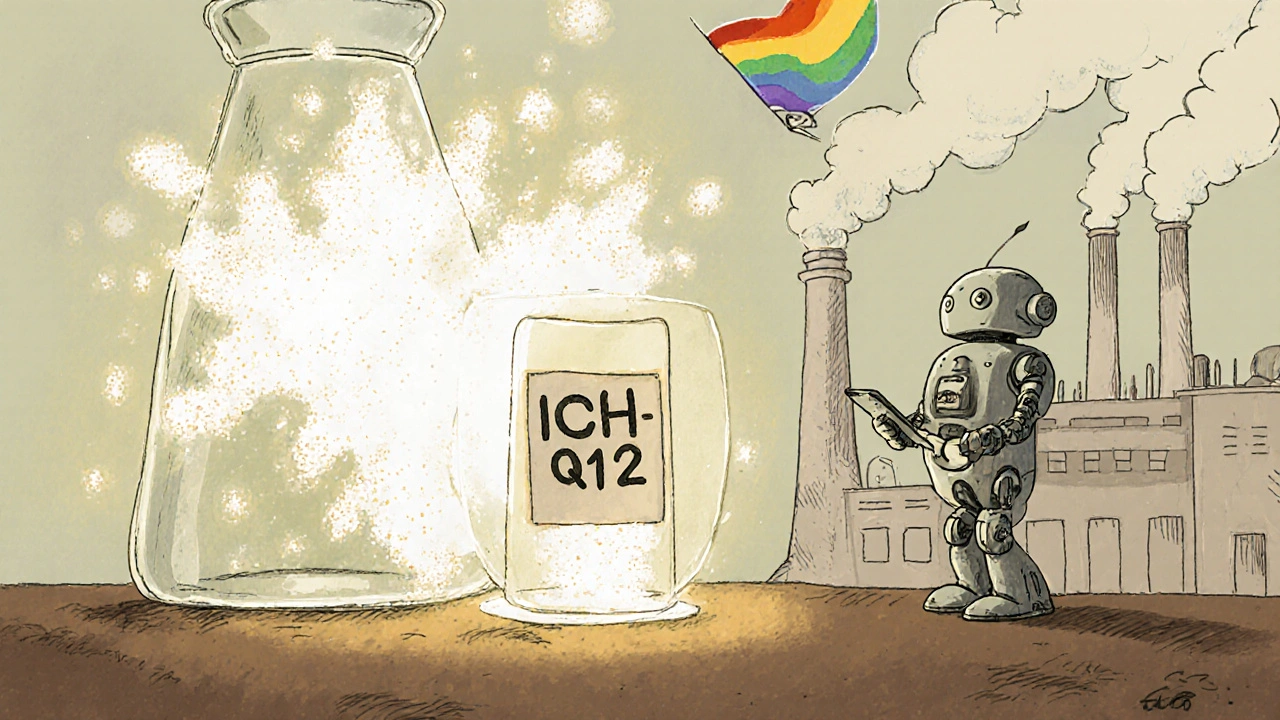
What’s Changing in Stability Testing
The field is evolving. In February 2023, ICH finalized Q13, a new guideline for stability testing in continuous manufacturing-a shift away from batch-by-batch production. This means stability data must now track product quality in real time during manufacturing, not just after. Another big change? ICH Q12, introduced in 2018. It lets companies make minor changes to formulations or packaging without restarting full stability studies. Companies using ICH Q12 report saving 25-40% on testing costs. Pfizer cut their stability sample sizes by 30% and saved $120,000 per product annually. The biggest shift coming? AI. By 2027, machine learning models are expected to predict degradation pathways with 80% accuracy-cutting testing timelines by 30-40%. Instead of waiting three years, companies might get reliable predictions in six months. But regulators won’t accept AI-only data yet. It’s still a tool to support, not replace, real-world testing.The Bottom Line
Stability testing is the quiet guardian of drug safety. It doesn’t make headlines. But when it fails, people get hurt. It’s expensive. It’s slow. It’s complex. But it’s non-negotiable. For manufacturers, it’s not just compliance-it’s risk management. For patients, it’s trust. You shouldn’t have to wonder if your medicine still works. Stability testing ensures you don’t have to.What Happens If You Skip It?
In 2021, a manufacturer of a cancer drug ignored out-of-specification (OOS) results from stability testing. The active ingredient was dropping below 85% potency. Instead of investigating, they submitted the data anyway. The FDA issued a complete response letter. Approval was delayed by 14 months. The company lost $180 million in projected revenue. And patients? They went without an effective treatment. That’s the cost of cutting corners.What is the purpose of stability testing in pharmaceuticals?
The purpose of stability testing is to determine how a drug’s quality changes over time under real-world storage conditions like temperature, humidity, and light. It ensures the product remains safe, effective, and within approved specifications throughout its shelf life, helping manufacturers set accurate expiration dates and storage instructions.
How long does stability testing take?
Real-time stability testing typically takes 24 to 36 months to complete, with samples tested at intervals like 0, 3, 6, 12, 18, 24, and 36 months. Accelerated testing lasts 6 months under harsher conditions (40°C/75% RH) to predict long-term behavior, but regulators require real-time data for final expiration dating.
What are the standard conditions for stability testing?
According to ICH Q1A(R2), standard long-term conditions are 25°C ± 2°C and 60% RH ± 5% RH for temperate climates. For hot and humid regions, it’s 30°C ± 2°C and 65% RH ± 5% RH. Accelerated testing uses 40°C ± 2°C and 75% RH ± 5% RH. Photostability testing requires exposure to 1.2 million lux hours of visible light and 200 watt-hours per square meter of UV light.
Can stability testing be outsourced?
Yes, about 72% of pharmaceutical companies outsource stability testing to contract research organizations (CROs) like SGS, Eurofins, or Charles River Laboratories. While this reduces costs and infrastructure needs, the manufacturer remains legally responsible for the data’s accuracy and compliance with regulatory standards.
What happens if a drug fails stability testing?
If a drug fails stability testing, the manufacturer must investigate the cause, which could involve formulation changes, packaging improvements, or manufacturing adjustments. If the issue affects safety or efficacy, the product may be recalled, delayed in approval, or pulled from the market. Failure to investigate out-of-specification results can lead to FDA warning letters or complete response letters that halt approvals for over a year.

